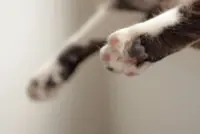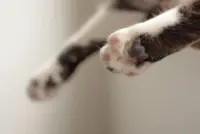Japanese researchers have now shed some light on one of the most intriguing of these mysteries by discovering the genetic mechanism behind purring. — Pixabay
Humanity's faithful companions for thousands of years, cats fascinate and mystify us in equal measure. Despite their close relationship with humans, many aspects of feline behaviour remain impenetrable to us.
Japanese researchers have now shed some light on one of the most intriguing of these mysteries by discovering the genetic mechanism behind purring.
Unlike other mammals, few behavioural studies have been conducted on cats, leaving many aspects of their communication mechanisms unclear.
However, domestic cats are remarkably sociable animals, enabling them to live in groups and form complex bonds with other cats as well as with humans.
The response was immediate: 265 cat owners responded to the call for participants in a single day, demonstrating the public's keen interest in understanding our whiskered companions.
By analysing their DNA samples and comparing them to those of 11 other feline species, scientists were able to establish for the first time a direct genetic link between purring and a variation in the androgen receptor gene.
The results speak for themselves. Cats carrying the short version of the androgen receptor gene score higher on purring scales, as assessed by their owners, than those with the long version.
But this genetic difference is not only linked to simple purring. It is also associated with gender-specific behaviour. Males with the short gene vocalise more toward humans, while females with the same genetic profile display more aggression toward strangers.
These discoveries take on a fascinating dimension when placed in the context of feline evolution. Comparative analysis with other Felidae species reveals a genetic transformation directly linked to domestication.
Published in the scientific journal PLOS One, this study also highlights the differences between pure-bred cats and mixed-breed cats. The former, often raised by humans from an early age, are more likely to carry the long version of the gene and seem to have less developed vocal communication skills.
Conversely, mixed-breed cats in the study, many of which were former stray cats that had been rescued, tended to meow more. They are more likely to have the genetic variant that promotes vocalisation, as if they had developed more intense communication strategies to survive and get adopted.
This genetic understanding of feline behaviour isn't just about satisfying our scientific curiosity about our beloved furry friends. The ability to predict certain behavioural tendencies based on genetic data could facilitate targeted observation and care tailored to the specific needs of each cat.
The goal remains clear: To enrich our knowledge about cats and help build more harmonious relationships between these animals and humans. – AFP Relaxnews





